- How to Propagate Monstera Guide: The Three Ways to Succeed - September 17, 2021
- Escargot Begonia: Why Is The Rex Begonia So Rare? - August 31, 2021
- Rieger Begonia: When You Can Expect The Hiemalis Begonia To Flourish - August 31, 2021
Philodendron Brasil is simple, quaint, and yet, quite beautiful. It has all the sophisticated and stylish looks of its plant family combined with easy care requirements. Variegated Heartleaf Philodendron is certainly alluring and capable of becoming dear to the hearts of many gardeners.
How to Identify Variegated Heartleaf Philodendron
The quaint and simple look of this plant can cause it to blend in with similar-looking plants both inside and outside its plant family; however, it does feature leaves that are sharply pointed at their tips, which is something that sets it apart from many other plants. Other features of this plant are:
- Leaves that are heart-shaped
- Leaves that are variegated in green and yellow
- Stems that grow in a vining pattern
How to Grow Variegated Heartleaf Philodendron from Seed
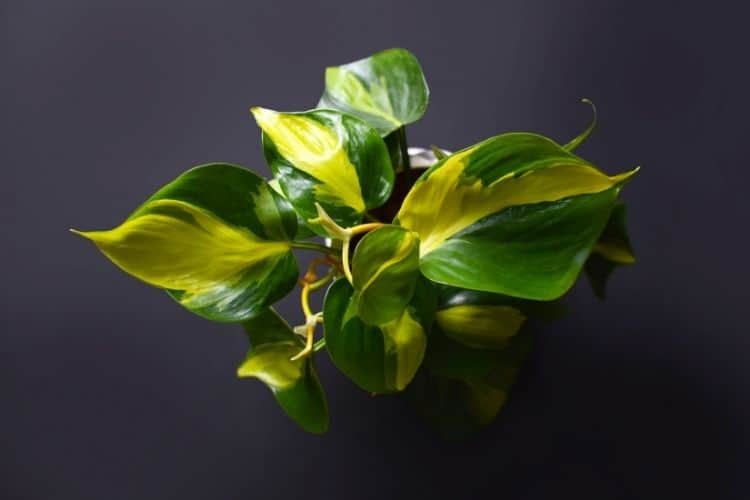
Philodendron planted from seed take a long time to show significant signs of growth. Because of the long waiting period, most gardeners opt for a different method altogether, but this can be a very rewarding process. If you are interested in growing a Variegated Heartleaf Philodendron from seed, you should go ahead and purchase seeds from a reputable seller.
Once you have the seeds, put them a centimeter deep in a seed starting mix that is in a seed starter tray. Next, moisten the soil with a spray bottle and place plastic wrap over the top of the seed tray to hold in moisture. Finally, set the seed tray in a warm room with bright but indirect sunlight.
You will need to remove the plastic wrap and moisten the soil as needed and transport the plant to a more permanent plant container once the seedlings have shown signs of sprouting and significant growth. After the plants have been moved to a permanent container, they can be and treated as mature plants.
How to Propagate Variegated Heartleaf Philodendron
Nearly all Philodendron varieties are easy to propagate via stem cuttings. This method is simple and straightforward and can be done during springtime pruning sessions.
If you are interested in propagating a Philodendron with this method, you will first need to cut a healthy stem with a sterilized cutting utensil. After this, fill a clear glass with water and set the stem in the water. Put the glass in a room that is warm and receives plenty of bright but indirect sunlight.
After a few weeks, the stem should produce roots, and once you notice this, the stems can be transferred to a container filled with potting soil and treated as a mature plant. Note: It will be necessary to change the water in the glass once a week while the stem is growing roots.
Variegated Heartleaf Philodendron Growing Conditions
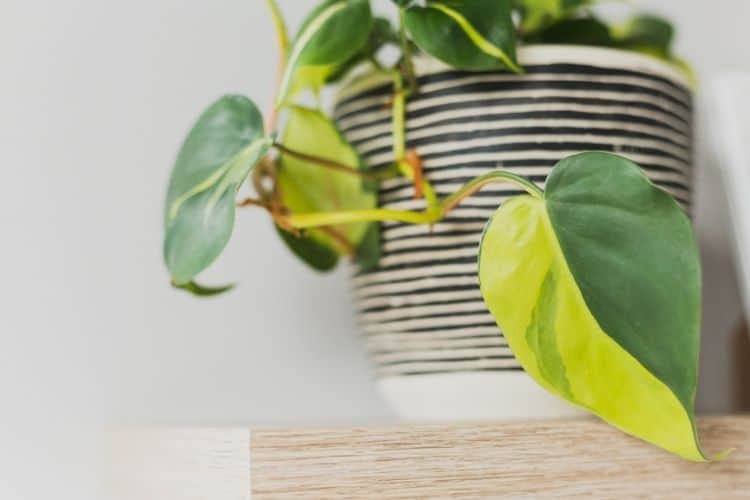
Since this plant is not cold-hardy and it is a native of tropical regions of South America, its ideal growing environment should include high temperatures combined with high humidity. Provide your Variegated Heartleaf Philodendron with temperatures ranging between 60 and 75 degrees Fahrenheit with humidity levels ranging between 70 to 80%.
Create this environment for your tropical Philodendrons by purchasing a Plant Heat Mat and a Pebble tray or a Plant Humidifier. These technologies will reduce the need to create an indoor greenhouse that will keep you and your family hot and sticky all day. Also, it is important to keep your tropical plants away from the air conditioner and heater vents, as well as, drafty doors and windows.
How to Plant Variegated Heartleaf Philodendron
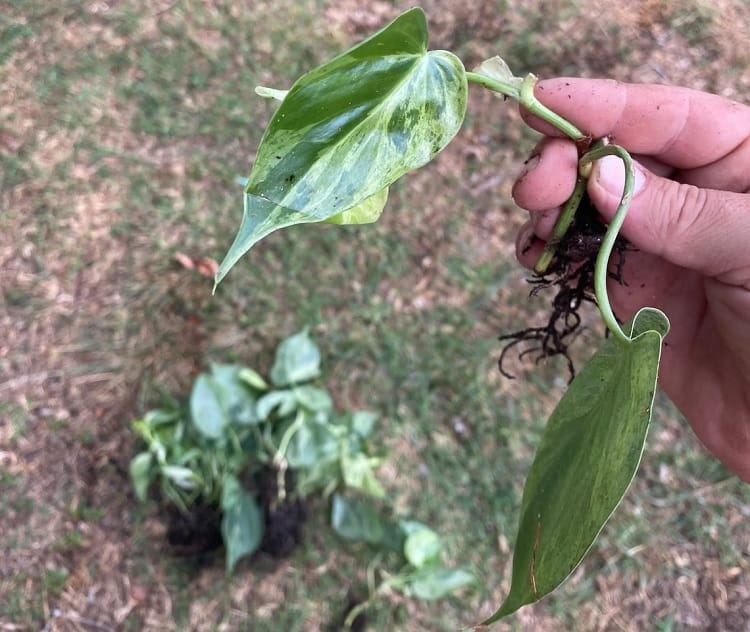
Repotting these plants every two to three years will provide them with new, fresh soil and room to grow. Keep an eye out for the following signs to know whether or not your plant needs repotted before two to three years has passed:
- Compacted Soil
- Roots that are crowded and growing into a ball formation
- A plant that looks too big for its current container
If you sense that your Variegated Heartleaf Philodendron needs to be repotted, you should get a new plant container that is two inches larger in diameter than the plant’s current container. Once you have the new container, fill it will potting soil and create a hole in the center of the soil.
After the plant container is prepped, you can remove the plant from its current container and transfer it to the new soil. Spread the soil around the base of the plant to secure it in its new home. Lightly water the plant and then set it in a warm room with indirect sunlight.
Note: Repotting should only be done on warm spring days to reduce the risk of the plant going into shock
Variegated Heartleaf Philodendron Potting & Soil
This Philodendron variety should be set in potting soil that is able to drain off excess water. A homemade soil consisting of 50% coco coir or peat and 50% perlite is one option, or, you can use this premade Aroid soil mix.
Don’t forget that the plant container also needs to drain off excess water. This hanging plant container by UPMCT is an excellent choice for any type of vining Philodendron.
Variegated Heartleaf Philodendron Water Requirements
This type of plant should be watered using the soak and dry method to limit the risk of root rot. It is a very simple method with six steps:
- Test the plant’s soil before watering it. It should only be watered if the top half of its soil is completely dry. If it is still moist, wait another day to water it.
- Fill a tray, container, or tub with water.
- Set the plant container in the water, but make sure the water isn’t so deep that it will overflow the lip of the container. The point of the soak and dry method is to utilize the drainage holes in the plant container to soak up water from the bottom.
- Let the plant soak up water for fifteen minutes.
- Remove the plant from the water.
- Set the plant in a spot where the excess water can drain from the container’s drainage holes.
If you still have some hesitancies or worries about watering any of your plants, download a plant watering app.
These apps are designed to help gardeners track when a plant has been watered, set reminders to water it, and get answers to common plant care questions. Technology and nature have come together to reduce and eliminate gardening worries.
Variegated Heartleaf Philodendron Light Requirements
This Philodendron variety requires full sun in order to grow healthier and faster. It can, however, adapt to low light conditions but it will not grow as quickly and it will not have as much variegation.
If you want to be sure that your plant is set up for success in the sun, use either a light meter or a light meter app to test your indoor lighting. With the help of these technologies, you will not need to worry whether or not your plants are getting adequate sunlight.
Best Variegated Heartleaf Philodendron Fertilizer
These plants should only be fertilized once a month during spring, summer, and fall. The fertilizer used should be organic, water-soluble, and diluted to a half-strength dosage. Joyful Dirt offers safe and gentle fertilizers for indoor and outdoor plants.
Best Variegated Heartleaf Philodendron Companion Plantings
Gardeners know that plants grow better together. It is not just about creating a tropical atmosphere or simple aesthetic looks, it is also about healthy plant care. Provide your tropical plants with extra humidity without added technology by getting a few more humidity-loving plants for your home.
When considering what types of plants to use as a companion planting for your Variegated Heartleaf Philodendron, keep the following requirements in mind:
- Pick plants that have similar care requirements, e.g., the same type of soil and watering method
- Pick plants that will look aesthetically appealing next to your other plant
- Pick plants that are easy to grow, propagate, and care for
A few examples of plants that will meet these plant companion requirements are:
Split Leaf Philodendron
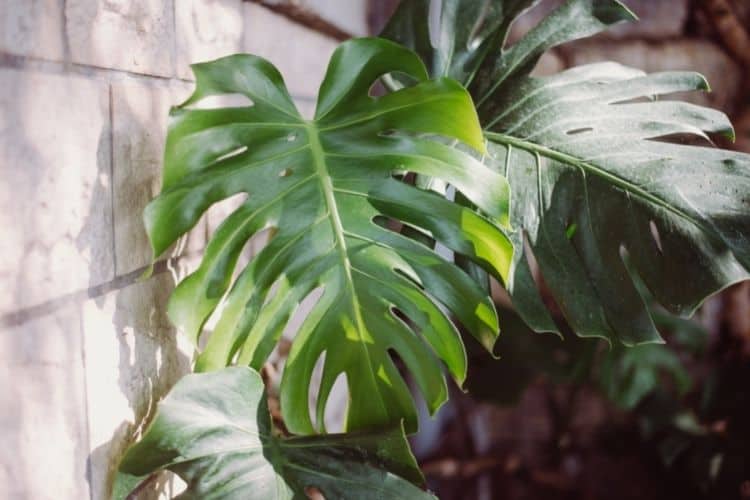
Here are a couple of plants that are from the same family as Variegated Heartleaf Philodendron. While they each come with unique features, they will still complement one another, plus, they will all require similar care.
Pros
- Split Leaf Philodendron has care requirements that are similar to those of Variegated Heartleaf Philodendron
- Split Leaf Philodendron has air-purifying qualities
Cons
- Split Leaf Philodendron is toxic
Peperomia Caperata
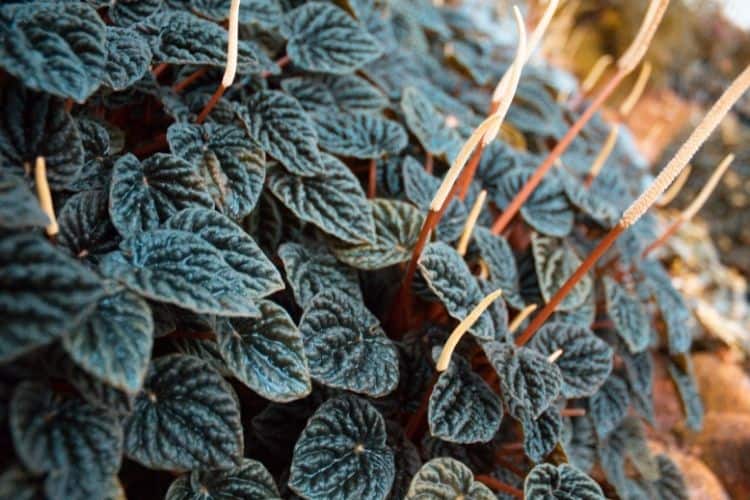
This is also a tropical plant that is native to South America. Because of this, it will share many care requirements with Variegated Heartleaf Philodendron.
Pros
- Peperomia Caperata is a very unfussy plant
- Peperomia Caperata stays quite small
- Peperomia Caperata is not toxic
- Peperomia Caperata can be grown with grow lights
Cons
- Peperomia Caperata is susceptible to infestations of mealybugs and spider mites
Pilea Plants
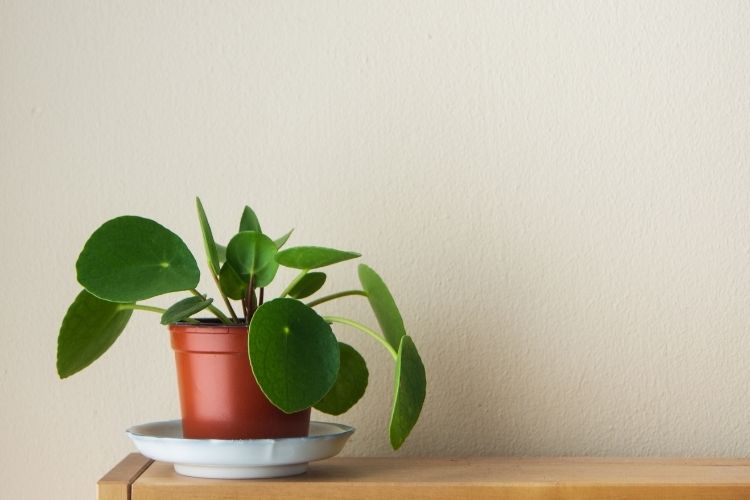
Here is the third type of tropical plant that is similar in its care and maintenance needs. With these plants growing together, you’ll never feel like gardening is a hassle. Pilea plants are naturally easygoing and will make the perfect companion for your Philodendron plant.
Pros
- Pilea plants are very easy to care for
- Pilea plants require many of the same care requirements that Variegated Heartleaf Philodendron requires
- Pilea plants come in different shapes, sizes, leaf textures, and colors
- Pilea plants are not toxic
Cons
- None
Variegated Heartleaf Philodendron Diseases and Common Problems
Here is a list of the most common issues faced by these plants. In this list is information on how to identify and treat each issue.
Aphids
Aphids are tiny tear-shaped insects that can be seen crawling on the plant and/or its soil. To deal with an infestation of aphids, follow these steps:
- Spray the plant with a mixture of neem oil and soapy water
- Wipe down the leaves of the plant
- Apply neem oil to the leaves to prevent another infestation
Mealybugs
Evidence of an infestation of mealybugs is small white spots that look like cotton on leaves and stems. To deal with an infestation of mealybugs, follow these steps:
- Spray a solution of alcohol and water on the leaves
- Rub the leaves with a cotton ball
- Coat the leaves in neem oil or insecticidal soap every few days
Root Rot
This is caused by overwatering a plant. If you learn how to properly water your plants, they should not get root rot. If, however, you are suspicious that your plant is suffering from this, look for these symptoms:
- Stems and leaves that have turned black
- Stems and leaves that have turned translucent
- Stems and leaves that have turned mushy
- Leaves that are dropping off regularly
Scale Insects
Evidence of this problem is round lumps on the plant’s leaves and stems. These lumps are usually small, round, and brown in color. To deal with an infestation of scale bugs, follow these steps:
- Spray them off with a hose
- Wipe the remainder off with neem oil and a cloth
- Prevent them from returning by coating the leaves with neem oil regularly
Variegated Heartleaf Philodendron Treatments and Maintenance
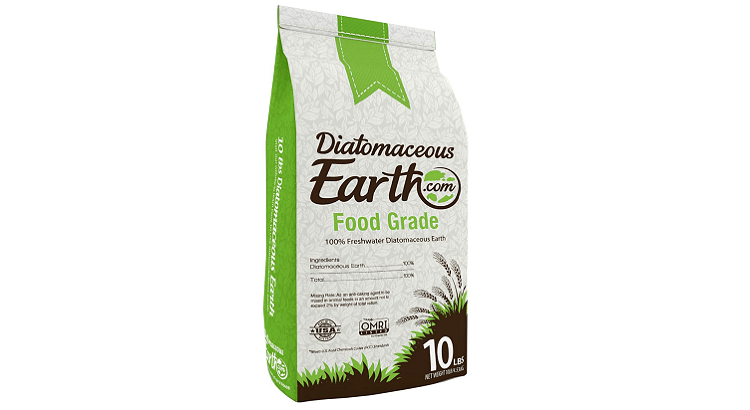
Since prevention is better than treatment, take some time to learn about what sort of diseases and pest infestations each of your plants may experience. Then, learn how you can best treat and prevent those. Here are few tips to help keep your plants healthy and disease-free:
- Schedule monthly inspections to look for pest infestations or symptoms of diseases.
- Use neem oil to regularly clean your plants.
- Water and feed your plants properly.
- Provide your plants with adequate amounts of sunlight, heat, and humidity.
- Mix diatomaceous earth into the soil of potted plants.
Where to Buy Variegated Heartleaf Philodendron Seeds Online
Since Philodendron seeds are difficult to find, it will require a little effort to search for them. If you are interested in purchasing these seeds, then start with these online shops:
Where to Buy Mature Variegated Heartleaf Philodendron Online
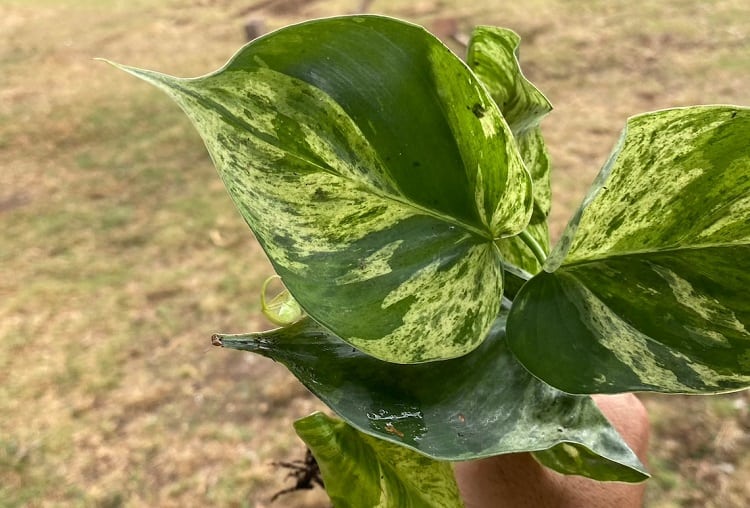
It is actually better to purchase a mature Philodendron plant since you can be guaranteed that what you are purchasing is real (seeds don’t reveal their true nature until they have been planted for a few months).
If you are interested in getting one of these plants delivered directly to your door, try one of these online shops:
FAQs
Question: Is Variegated Heartleaf Philodendron Toxic?
Answer: Yes, these plants are very poisonous to animals and humans, and therefore, these plants should be kept in a place where pets and children cannot reach them. Symptoms of consuming one of these plants are:
• Swelling of the mouth, throat, lips, and tongue
• Drooling
• Pain around the mouth
• Difficulty swallowing and breathing
If a pet or a child has consumed any part of these plants, contact Poison Control Center, Animal Poison Control, or Ask a Poison Control Vet.
Question: Do Variegated Heartleaf Philodendron Have Air Purifying Qualities?
Answer: Yes, most types of Philodendron plants purify the air from formaldehyde and other air pollutants.
Question: Which USDA Hardiness Zone Can Variegated Heartleaf Philodendron be Planted In?
Answer: These are not cold-hardy plants, so should only be planted in the ground if you live in zones 11 and above. If you live in zones lower than this, they should be planted in a container that can be transferred indoors during winter.
In Conclusion
Variegated Heartleaf Philodendron is a plant that is sure to warm your heart and fill your garden with tropical vibes. Take pleasure in your garden as you experience the easygoing and beautiful nature of this Philodendron.

